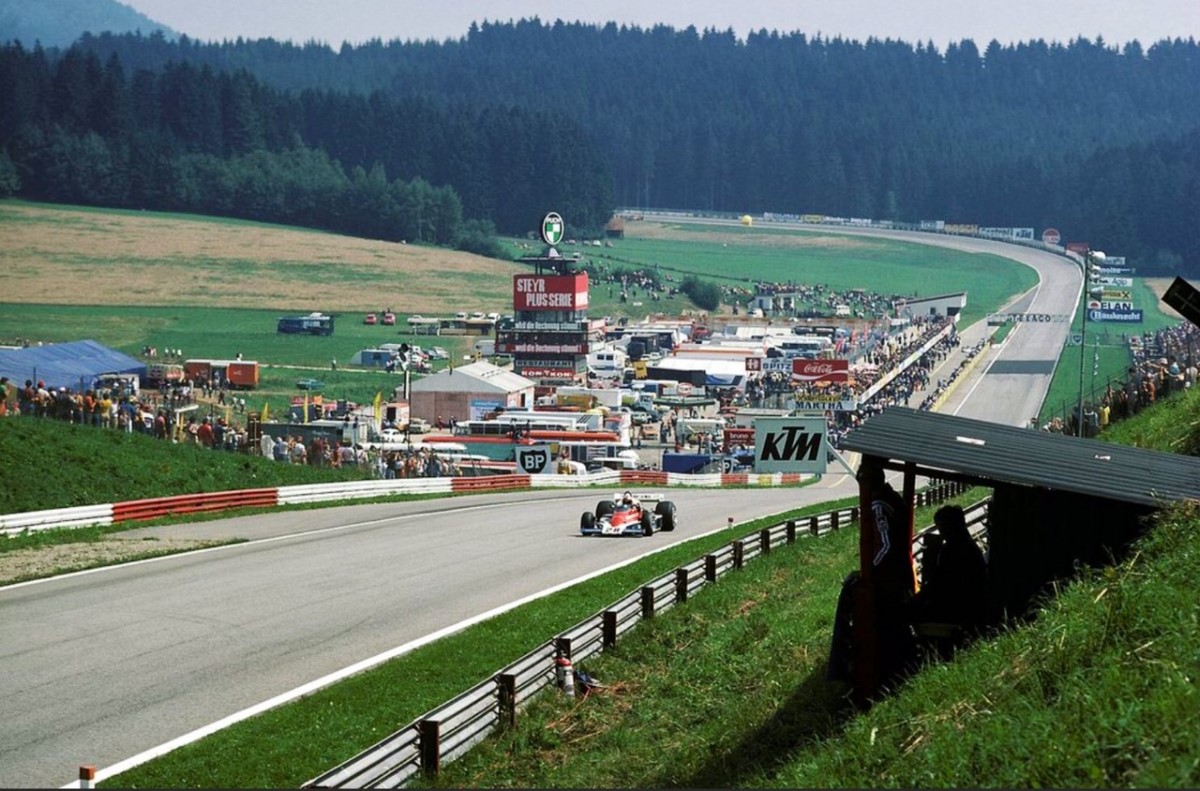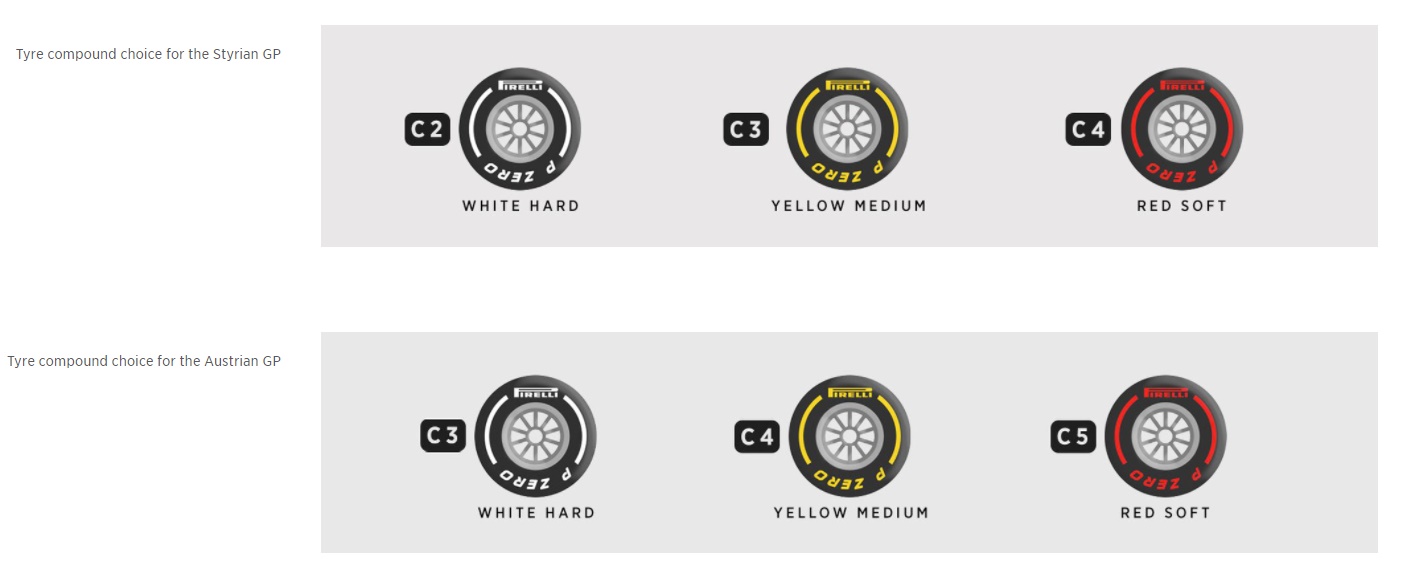F1: Styrian & Austrian GP Preview
The F1 teams heads to Austria for two weeks of racing at the Red Bull Ring, the short but challenging circuit in Spielberg, Styria, where the eighth and ninth rounds of the championship will be held.
The fastest lap on the Formula One calendar lies across a valley in the Styrian Mountains. The Austrian Grand Prix circuit may only have 10 corners, but it packs a punch at every turn. The first half of the lap is pure power – three long straights – before the circuit careers downhill, becoming a white-knuckled rollercoaster ride all the way to the finish. And, as per last year, Formula One is visiting it twice.
Austria joined Formula 1’s calendar in 1964 at the Zeltweg Airfield but the flat and featureless circuit proved unpopular, and a new complex was designed in the hills above nearby Spielberg. The fast and flowing Österreichring featured between 1970 and 1987 before returning in refurbished and truncated fashion as the A1 Ring from 1997 through 2003. The venue fell into disrepair thereafter, with no events taking place for eight years, before it was brought up to modern standards and heavily renovated by Red Bull.

Austria’s grand prix subsequently returned once more in 2014, with the verdant hills again reverberating to the sound of Formula 1 machinery. In 2020 Spielberg became the first venue in Formula 1 history to host two races in the same calendar year. Its pair of events were the opening rounds of the pandemic-delayed season as Formula 1 proved that it could safely compete in a challenging global environment, providing a much-needed fillip for the motorsport industry.
The 4.3km circuit has only 10 corners and its short lap time leaves very little wiggle room, heightening any mistake, which frequently leads to close qualifying sessions and fast-paced racing. Once more in 2021 Spielberg will host two grands prix across successive weekends, with the first titled the Styrian Grand Prix – in deference to the local commune – and the second taking on the Austrian Grand Prix moniker.
With Austria lifting restrictions on July 1st a full capacity crowd is set to be welcomed to Spielberg for
the second event – the first such occasion since 2019.
Unlocking a lap around the Red Bull Ring
Ten corners are completed in under one minute and 10 seconds, highlighting the high-speed nature of the circuit, boosted by three powerful DRS zones and a sweeping downhill slalom to the flag that rewards precision – and punishes over-commitment.
Drivers will arrive at Turn One at speeds well over 300km/h (186mph) for one of the hardest braking points on the circuit, dropping to fourth gear and 140km/h (86mph) for the medium-speed corner.

It’s key to get back on the power quickly as drivers move onto the 800m straight, which incorporates the minor flat-out kink of Turn Two, and climb towards Turn Three for one of the best overtaking spots on the track.
Hugging the right-hand side of the circuit, drivers reach 315km/h (195mph) and sweep left to approach a bumpy braking point. The challenge of Turn Three is then increased by the sharp right-angle of the corner. Mistakes are often made, and drivers can end up on the run-off.
Dropping to second gear and speeds of 80km/h (49mph) while navigating a tricky camber change, drivers get back on the power for another long straight downhill into Turn Four.
With the benefit of DRS, drivers clear 300km/h (186mph) before taking on the challenge of braking downhill into a sweeping curve, which begins a high-speed and flowing downhill second and third sector.
Turns Five, Six and Seven are navigated at high speed, with drivers often lifting rather than braking to maintain a higher average speed.
They exit the complex at over 275km/h (170mph), pulling high lateral g-forces, maximising the outside kerb of Turn Eight before a short straight plunges downhill.
Turns Nine and 10 arrive fast: they’re back-to-back right-handers where over-aggression can lead to invalidated lap times – or worse – for using the run-off.
It’s crucial to take the inside kerb at the final corner so a driver can return to the power swiftly for the start/finish straight.
Expect lap times to get progressively quicker across the two weekends as the track rubbers in. With consistent conditions, lap times should also significantly improve for the Austrian Grand Prix.
Fact File: Styrian Grand Prix
- In terms of lap time, Spielberg currently features the shortest lap in the regular F1 calendar. Valtteri’s pole time of 1m02.939s from last year’s Austrian Grand Prix is the current lap record.
- However, while the Red Bull Ring has the quickest lap time, the track length of 4.318km is only fifth shortest, behind Brazil, Mexico, the Netherlands and Monaco.
- Because of the quick lap times and short track length, it’s one of the tightest Qualifying sessions of the season, with fewer opportunities to find time.
- It also means drivers can fit in more Qualifying runs during the sessions, if they have the available tire sets, and teams can complete more laps in the one-hour practice sessions.
- The track is one of the most aggressive when it comes to the shape, depth and spacing of the curbs, which was evident during the two races in Austria in 2020. The high sausage curbs on the corner exits are also aggressive, therefore it’s one of the harshest on the car’s suspension.
- Because of the aggressive nature of the curbs at the Red Bull Ring, the risk of bodywork damage is high, and we often see drivers picking up damage in practice as they push the limits of the track.
- Spielberg has the fewest corners of any track on the regular F1 schedule, with just 10 – one fewer than the Autodromo Nazionale Monza.
- From these 10 corners, only seven are classified as grip-limited where the driver has to reduce throttle input. Turn 2, 5 and 8 are all taken at full throttle and therefore aren’t classed as corners in the strict sense of the word.
- The track has a high amount of track warp, where the banking of the track changes from one side to the other, with Turn 3 being one example. Here, the track drops towards the apex, with the car passing over the crest of the hill, whilst picking up power on exit. This causes the car to lift a wheel, which can lead to struggles with braking, stability and traction.
- Austria has three big braking zones, two of which we class as “heavy” – registering more than 4g, for over 0.4s. This leads to high brake wear. Turns 1, 3 and 4 come in close succession, too, so that can lead to very hot brakes.
- Austria has the joint-second highest percentage of lap time spent at full throttle, with 73%. Only Italy has more time spent at full throttle, with 78%.
- The temperatures in Austria can be very variable, making the weekend far from straightforward. Over the last five years, the race day temperatures have fluctuated from between 16°C to 32°C.
- Spielberg’s high altitude and lower ambient air pressure impact the cooling of the engine and the brakes, as the mass flow through the radiators and brake ducts is lower.
- The 69-metre elevation change from the lowest to highest point at the Red Bull Ring is one of the highest of the season, which is unsurprising considering the track’s position in the Austrian Alps. The lowest point is on the start/finish straight and the track reaches a peak at the top of Turn 3.
- The drivers experience 5.1g through the fast Turn 9, the penultimate corner on the track. This is the third-highest g-force registered all season.
- We’ll be racing at the Red Bull Ring for two consecutive weekends, once again. This brings the advantage of accumulating a lot of data from the first event, so you know how the tire and car reacts for the second event, but this is also a disadvantage as that knowledge can lead to more limited strategic options.
Tires
The Red Bull Ring is a superb test of the Formula One car, demanding power, aerodynamic efficiency and good braking. The location of the circuit in the Styrian Mountains makes for a dramatic visual setting but also places some heavy demands on the car. The big elevation changes and high altitude have a big impact on the cars’ performance. The track surface and the heavily handed nature of the circuit place additional demands on the tires.
For the Grand Prix of Styria, which is the first of two back-to-back races here in Zeltweg, Pirelli bring the traditional compound allocation for this circuit of C2, C3 & C4. This is the middle of the Pirelli range and is the same as we used last weekend in France, and they should offer a good solid set of compounds for this event. For the subsequent Grand Prix of Austria, we switch to the softer combination of C3, C4 & C5, which are the compounds that we had in Monaco and Baku.

Word from the most recent race winner – Max Verstappen
In France you scored a career hat trick in taking your third clean sweep of pole position, race victory and fastest lap. Just how good was last weekend?
It was an amazing weekend, and it always feels good to get pole position, but to win was a great result. I’m super pleased with that, and we won the race on strategy. I hope now we can keep this up for the rest of the year. Everyone at the track and in the factory is working flat out, and now we just need to keep pushing to win more races this year.
Historically, Circuit Paul Ricard has been a weaker track for us so did you expect to be so competitive?
No we didn’t as Mercedes have been so strong there in the past, but we are seeing that every race weekend is different in terms of competitiveness, and you never know where you stand until you’re out on track. You never know what the others are capable of so we didn’t expect this result, which makes it even more satisfying. It was a great team effort from everybody, you can see everyone is working very well together, and it’s just a great team of people here.
The next race of this triple header is at our home track, the Red Bull Ring. What are you expecting?
I’m really looking forward to Austria because, of course, it’s like a home Grand Prix and the opportunity to have two races makes it even better. It’s always nice to race here, and we’ve had good results at the Red Bull Ring, but nothing is ever guaranteed. We have to again set up the car well there, read the conditions and react to them. I don’t know what the weather will be like, but for sure I’m expecting it to be close again. We’ll find out when we get there, but hopefully, we can have two very good weekends.
